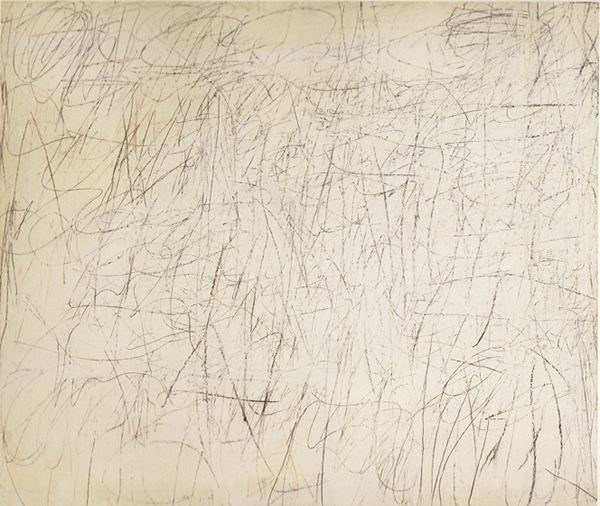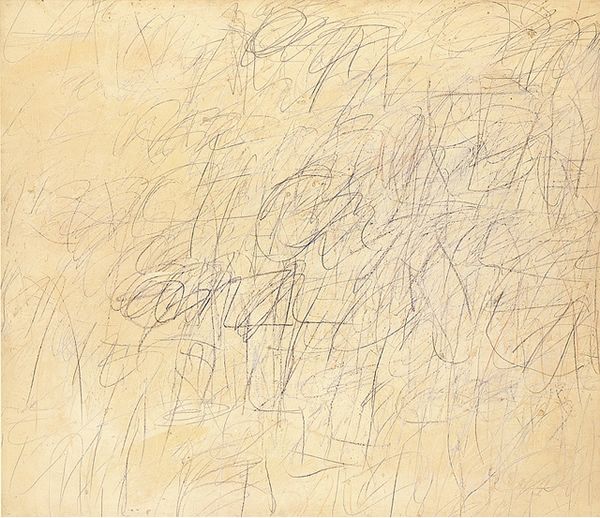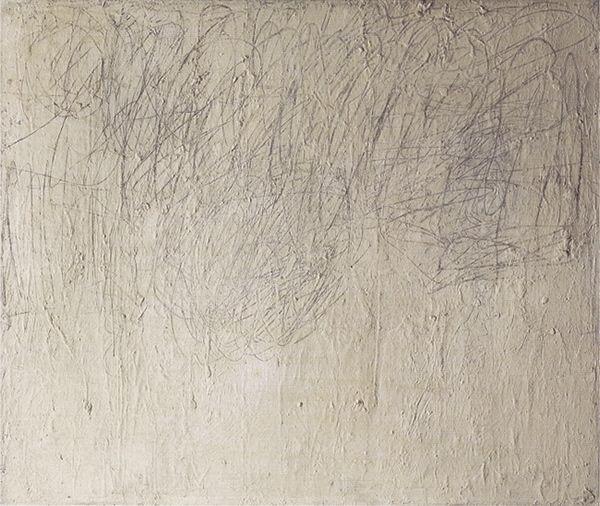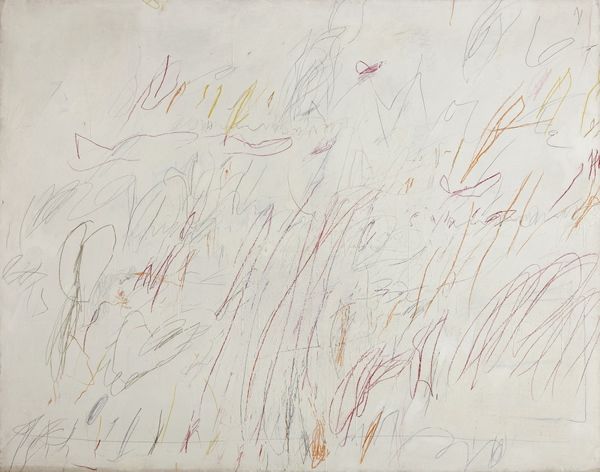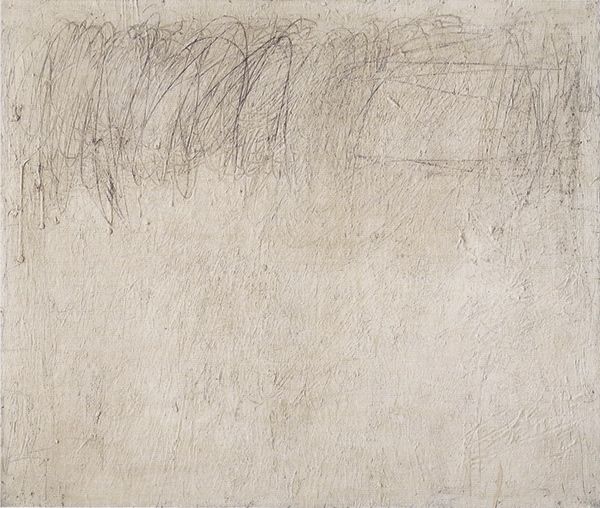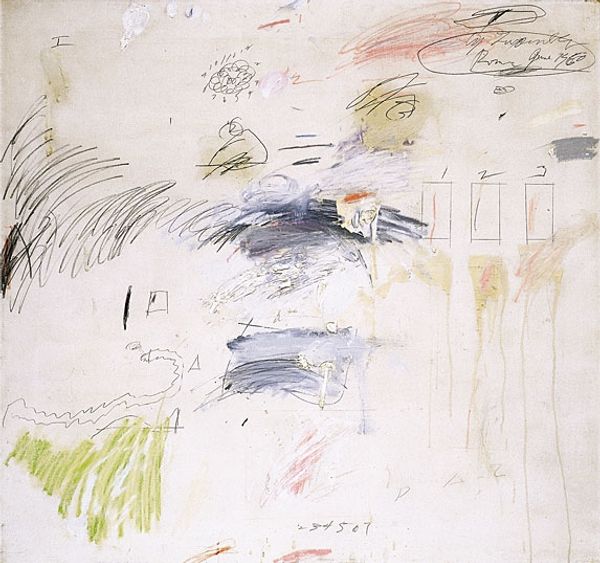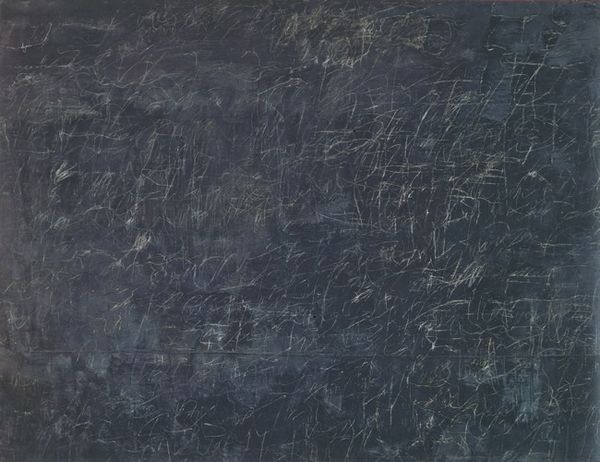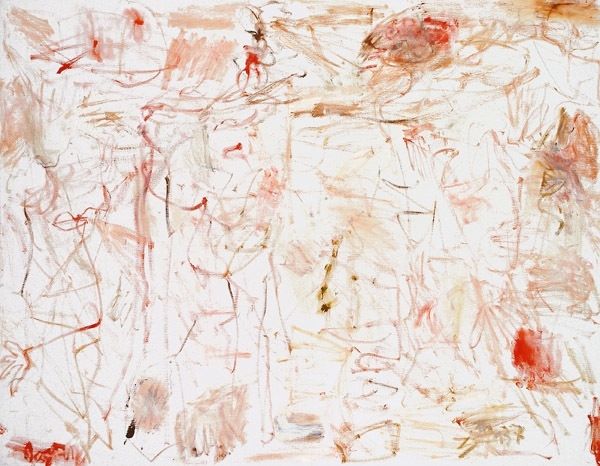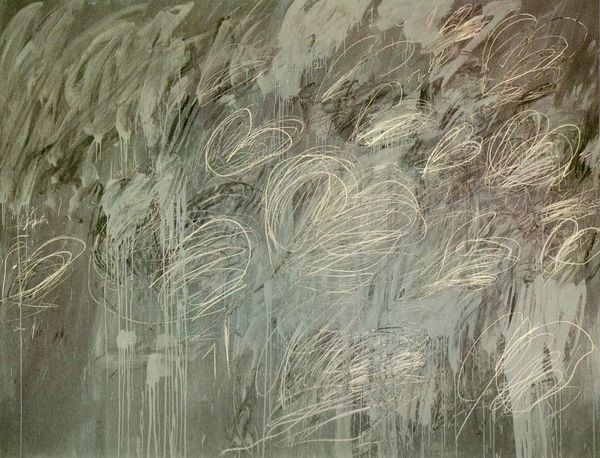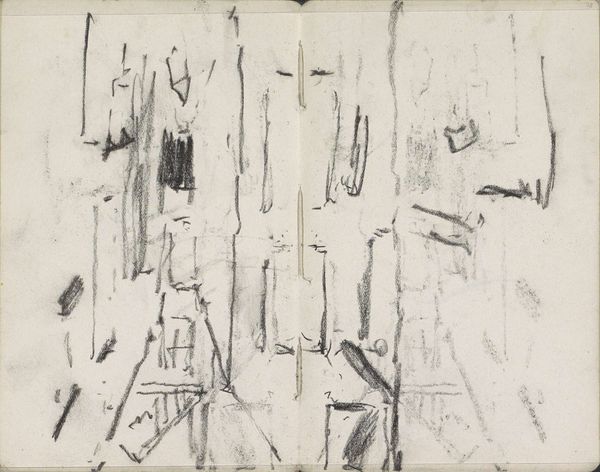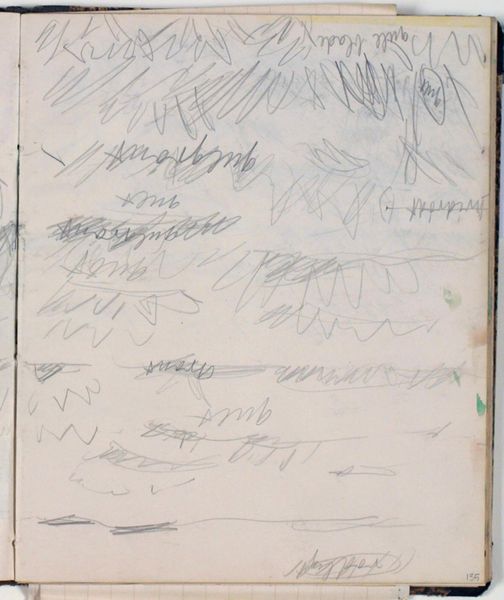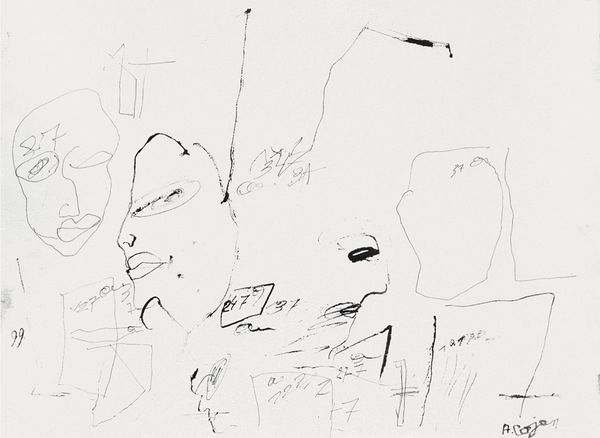
drawing, paper, graphite
#
abstract-expressionism
#
drawing
#
ink painting
#
hand drawn type
#
paper
#
text
#
black-mountain-college
#
calligraphic
#
paint stroke
#
abstraction
#
line
#
graphite
#
calligraphy
Copyright: Cy Twombly,Fair Use
Editor: We're looking at Cy Twombly's "Olympia" from 1957, rendered in graphite and ink on paper. It feels almost like a palimpsest, with layers of scribbled lines and text. What’s your take on a piece like this? Curator: The 'graffiti' aesthetic, typical of Twombly, is incredibly deliberate. It’s vital to understand that this “scribbling” emerged amidst Abstract Expressionism. Instead of heroic gestures on immense canvases, we have this delicate, almost hesitant mark-making. Consider the public perception of art in the late 50s. Wasn’t there a tension between elitism and the desire to engage a broader audience? Editor: Absolutely. So, this piece almost rebels against the perceived seriousness of the art world at the time? Curator: Precisely. It subtly challenges the notion of artistic genius. Also, think about how the title, "Olympia," plays with art historical references, evoking Manet’s scandalous painting. This creates a dialogue – is Twombly demystifying the canon, or is he positioning himself within it? The location of where Twombly exhibited and the critics reviewing these pieces certainly add more fuel to this. Editor: It’s interesting how he incorporates text and writing, making it less of a traditional painting and more of a conceptual piece. Curator: His work anticipated later conceptual art movements. Twombly almost erases the boundary between high art and the everyday, asking: Where do we draw the line? How does that reflect how galleries chose who and what would hang on walls? Editor: This has really shed new light on the intent behind what I initially thought was simply chaotic mark-making. It shows me how Twombly questions everything we think we know about what defines art. Curator: And that is the lasting power of this piece: prompting that very question in an academic sphere.
Comments
No comments
Be the first to comment and join the conversation on the ultimate creative platform.
